Do you need to replace a deadbolt lock on your front door? Perhaps the keys don’t work any more, or you lost them. Whatever the reason might be, if replacing your current lock is necessary, it’s important not only to select the right type of lock but also to know how to install it properly. In this blog post, we’ll go over in detail how to remove a Schlage door knob cylinder—a task that can be time-consuming and intimidating for some people!
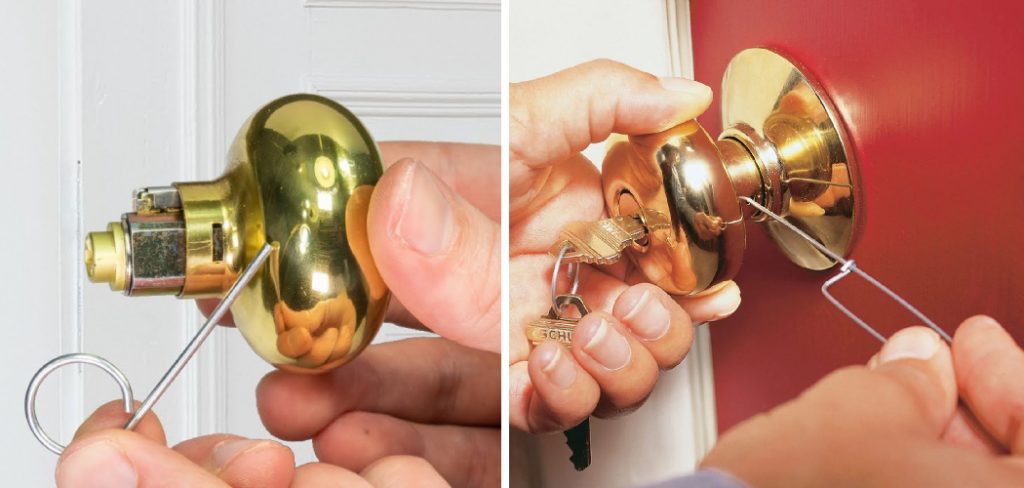
We’ll provide step-by-step instructions on how to remove lock cylinder from schlage door knob so that anyone with basic DIY knowledge can replace their old lockset without spending hours trying out different techniques. Keep reading for lots more advice and tips about removing a Lock Cylinder from your Schlage Door Knob!
Necessary Tools and Materials
Given below is a list of essential tools and materials that you will need to remove the lock cylinder from your Schlage door knob:
- A Flathead Screwdriver or a Utility Knife With a Sharp Blade
- A Pair of Pliers
- A Drill With the Right Size Bit for Drilling Out the Pin
- A New Schlage Door Knob Cylinder
Once you’ve gathered the necessary tools, it’s time to remove the lock cylinder from your Schlage door knob.
10 Step-by-step Guides on How to Remove Lock Cylinder From Schlage Door Knob
Step 1: Identify the Type of Lock Cylinder Your Door Knob Has
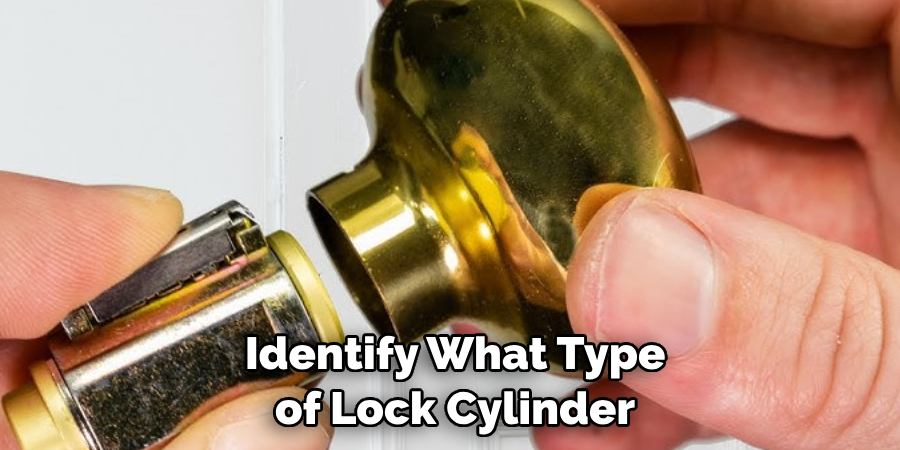
The first step to removing your Schlage door knob is to identify what type of lock cylinder it has. The cylinder can be either a single-sided or double-sided one; it should be clearly marked on the outside of the knob and/or on the box that the lock came in. Knowing which type of cylinder you have will help you determine the best way to remove it.
Step 2: Unscrew the Door Knob
Once you’ve identified your lock cylinder, use a flathead screwdriver or a utility knife with a sharp blade to unscrew the doorknob from its mounting plate. If necessary, use pliers to help loosen any screws that might be stuck. It’s important to be careful and not damage the screws while removing them. But if you do, don’t worry as it won’t affect the lock-removing process.
Step 3: Remove the Mounting Plate
With the door knob unscrewed you can now remove the mounting plate. Slide it out of its recess and set it aside for later use when reinstalling your new cylinder. You may also need to remove a set screw, if present. But be careful not to lose the screw as you’ll need it when reinstalling the new lock. It’s not uncommon for the mounting plate to be stuck, so you may need to use some force to remove it.
Step 4: Remove the Lock Cylinder
Now that you’ve removed the mounting plate, it’s time to remove the lock cylinder. To do this, use a drill with the right size bit for drilling out the pin. The bit should be small enough to fit into the lock cylinder without damaging it. Once you’ve drilled out the pin, pull out the lock cylinder and discard it.
Step 4: Remove the Retaining Ring
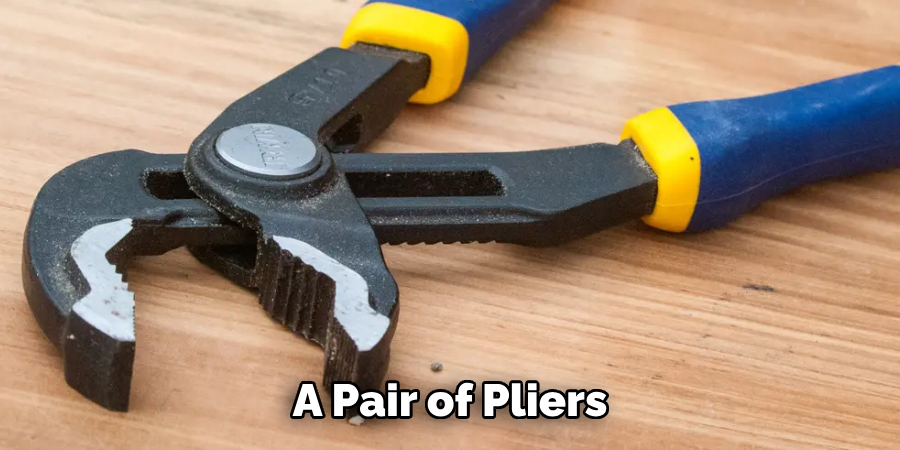
Underneath the mounting plate is a small metal retaining ring. Use your flathead screwdriver or a pair of pliers to carefully remove this ring and set it aside. But be careful not to damage the ring as it’s important for a secure installation of your new lock. You don’t want it to be too loose or too tight.
Step 5: Expose the Lock Cylinder
Once the retaining ring has been removed, you will be able to see the lock cylinder itself. It should be held in place by two small pins which need to be drilled out in order to remove the cylinder. It’s important to use the right size bit for drilling out these pins so that you don’t damage the cylinder.
Step 6: Drill Out the Pins
Using a drill with the right size bit for drilling out the pins, carefully drill out each pin until it is flush with the surface of the lock cylinder. This will allow you to slide the cylinder out of its mounting hole. It’s important to be careful not to damage the pins as you drill them out. This will make it much easier for you to install your new lock.
Step 7: Slide Out the Lock Cylinder
Once both pins have been drilled out, you should be able to slide the lock cylinder out from its mounting hole. Do so carefully and set it aside for later use when reinstalling your new cylinder. It’s important to be careful not to damage the pins or the mounting hole as you slide out the lock cylinder.
Step 8: Reinstall the Retaining Ring
Once the lock cylinder has been removed, it’s time to reinstall the retaining ring. Use your flathead screwdriver or pliers to carefully insert and tighten the ring. But be careful not to damage the ring as you tighten it. The retaining ring should fit snugly in order for your new lock cylinder to be installed properly and securely.
Step 8: Remove Any Remaining Parts
Once the lock cylinder is out, there may be some small parts that remain in the mounting hole. Use your flathead screwdriver or utility knife to carefully remove any remaining parts and set them aside for later use when reinstalling your new cylinder. It’s important to be careful not to damage the mounting hole as you remove these parts.
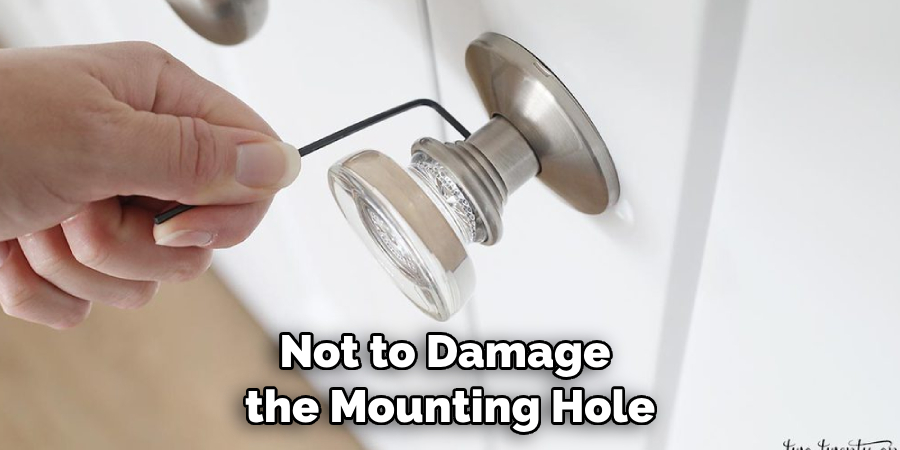
Step 9: Install Your New Lock Cylinder
Now that you’ve removed the old lock cylinder, it’s time to install your new one. First, insert the new cylinder into its mounting hole making sure to line it up with the two pins that were drilled out earlier. Once in place, slide the retaining ring back on top of the cylinder and then firmly tighten the screws.
Step 10: Reinstall the Door Knob
Finally, reinstall the door knob by sliding it onto the mounting plate and then firmly tightening the screws. You’re now ready to use your new Schlage door knob! It’s important to remember to keep your new keys in a safe place and never give them out or leave them lying around.
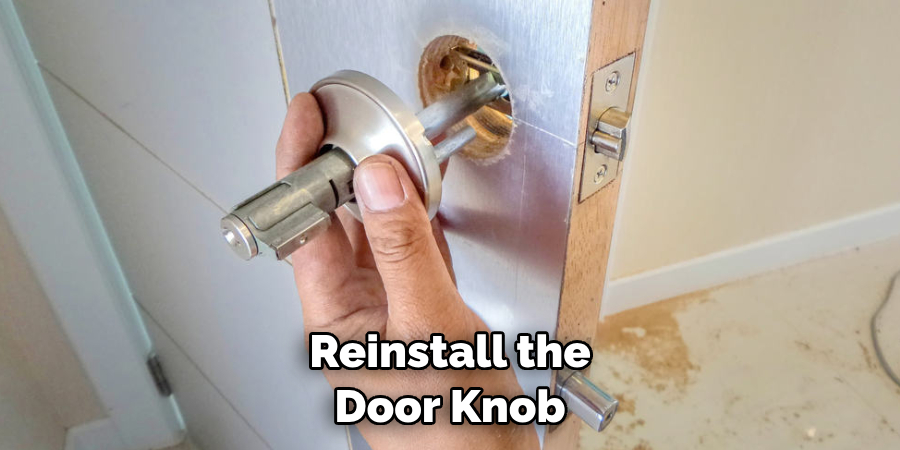
Always make sure to double-check the installation process and test your Schlage door knob before using it regularly. If you find that there are any problems with the lock cylinder or door knob at any point, don’t hesitate to reach out to a professional locksmith for help.
With this step-by-step guide on how to remove lock cylinder from schlage door knob, you should now be able to replace your old lockset with a new one in no time! Just follow the instructions carefully and always keep safety in mind when working on any DIY project. Good luck!
Frequently Asked Questions
Q: How Do I Know if My Schlage Door Knob Has a Single or Double-sided Cylinder?
A: You can tell by looking at the outside of the knob or the box that the lock came in. The type of cylinder should be marked clearly. If not, you may need to contact Schlage directly for more information.
Q: Do I Need to Replace My Lock Cylinder?
A: If your lock cylinder is worn out or damaged, then it’s probably a good idea to replace it. However, if the cylinder is still in good condition and you just need new keys, then you can simply rekey your existing lock. This is much quicker and simpler than replacing the entire lock cylinder.
Q: How Do I Make Sure My New Lock Cylinder Is Installed Properly?
A: Always double-check your work when installing a new lock cylinder. Make sure that all screws are firmly tightened and that the cylinder is sliding into its mounting hole correctly. If you have any doubts or questions, don’t hesitate to contact a professional locksmith for help.
Q: What Should I Do If My Schlage Door Knob Does Not Work Properly?
A: If your door knob does not seem to work properly, then it’s best to contact a qualified locksmith for assistance. They will be able to inspect the lock and determine what the problem is as well as how best to fix it. Trying to repair a lock yourself can be dangerous and oftentimes results in more damage than good. Professional locksmiths can help you get your door knob working properly again quickly and safely.
Conclusion
We hope this article on how to remove lock cylinder from schlage door knob has been helpful in guiding you through the steps involved in replacing a Schlage door knob. With a few simple tools and instructions, you can take care of the entire replacement process without too much trouble. If you do find yourself struggling, there are plenty of resources online to help you out. And don’t forget, if you have any further questions about removing a lock cylinder from a Schlage door knob, feel free to contact one of our experts for advice or assistance. Thanks for reading and happy DIY-ing!
About
Safety Fic is a distinguished figure in the world of Diy design, with a decade of expertise creating innovative and sustainable Diy solutions. His professional focus lies in merging traditional craftsmanship with modern manufacturing techniques, fostering designs that are both practical and environmentally conscious. As the author of diy, Safety Fic delves into the art and science of Safety Fic-making, inspiring artisans and industry professionals alike.
Education RMIT University
(Melbourne, Australia) Associate Degree in Design (Safety Fic) Focus on sustainable design, industry-driven projects, and practical craftsmanship. Gained hands-on experience with traditional and digital manufacturing tools, such as CAD and CNC software.
Nottingham Trent University
(United Kingdom) Bachelor’s in diyfastly.com and Product Design (Honors) Specialized in product design with a focus on blending creativity with production techniques. Participated in industry projects, working with companies like John Lewis and Vitsoe to gain real-world insights.
Publications and Impact
In diy, Safety Fic his insights on indoor design processes, materials, and strategies for efficient production. His writing bridges the gap between artisan knowledge and modern industry needs, making it a must-read for both budding designers and seasoned professionals.
